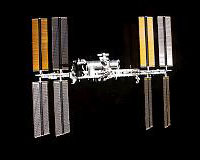 |
Paris, France (ESA) Jan 15, 2010 A major 7.0-magnitude earthquake struck the Haitian capital of Port-au-Prince on 12 January, causing major casualties and damage. The quake was followed by several aftershocks with magnitudes over 5.0. Such a powerful earthquake can make current maps suddenly out of date, causing additional challenges to rescue workers on the ground. Earth observation satellite images can help rescue efforts by providing updated views of how the landscape and the infrastructure have been affected. Following the event, the French Civil Protection authorities, the Public Safety of Canada, the American Earthquake Hazards Programme of USGS and the UN Stabilisation Mission in Haiti requested satellite data of the area from the International Charter on 'Space and Major Disasters'. The initiative, referred to as 'The Charter', is aimed at providing satellite data free of charge to those affected by disasters anywhere in the world. To meet the requirements of the rescue teams in Haiti, Very High Resolution imagery is needed from both optical and radar sensors. Through the Charter, the international space community is acquiring satellite imagery as quickly as possible. Currently, data are being collected by various satellites including Japan's ALOS, CNES's Spot-5, the U.S.'s WorldView and QuickBird, Canada's RADARSAT-2 and ESA's ERS-2 and Envisat. Satellite imagery acquired immediately after the event are used to generate emergency maps to provide rescue services with an overview of the current state of the area. These can be compared with situation maps generated from archived satellite data to identify major changes on the ground caused by the disaster. Comparison of the maps from before and after the event allows areas that have been hit hardest to be distinguished and identify passable routes for relief and rescue workers. Additionally, they can help to identify areas which are suitable for setting up aid camps where medical support and shelter can be provided to people. Radar satellites are able to peer through clouds, which is an asset when weather conditions prevent the use of optical satellite instruments. Radar imagery can be used to identify hazards such as landslides that may be triggered by earthquakes. In the long term, radar data can also be processed to map surface deformations caused by earthquakes to help scientists understand better seismic events. The Global Monitoring for Environment and Security's SAFER project is collaborating with the Charter to provide a specialised capacity to produce damage maps over the area. SAFER's value-adding providers SERTIT from Strasbourg and the German Aerospace Centre's (DLR) centre for satellite-based crisis information (ZKI) from Munich are currently working on this. In the framework of SAFER, other user organisations, including the German Federal Office of Civil Protection and Disaster Assistance and the UN World Food Programme, have requested damage-mapping services. Based on the collaboration between the Charter and SAFER, the first space-maps derived from crisis data acquired on 13 January were produced by SERTIT within 24 hours as rapid situation maps to help locate damaged areas with up-to-date cartographic material. Together with ESA and CNES, the Charter, founded in 2000, currently has 10 members: the Canadian Space Agency (CSA), the Indian Space Research Organisation (ISRO), the US National Oceanic and Atmospheric Administration (NOAA), the Argentine Space Agency (CONAE), the Japan Aerospace Exploration Agency (JAXA), the British National Space Centre/Disaster Monitoring Constellation (BNSC/DMC), the U.S. Geological Survey (USGS) and the China National Space Administration (CNSA). Via the Charter mechanism, all of these agencies have committed to provide free and unrestricted access to their space assets to support relief efforts in the immediate aftermath of a major disaster. The Charter also collaborates with other satellite damage-mapping initiatives within the UN such as the UNITAR/UNOSAT team who is receiving support from the U.S. government to analyse satellite imagery to be provided to the Haitian government, UN sister agencies and NGOs.
Share This Article With Planet Earth
Related Links Envisat Earth Observation News - Suppiliers, Technology and Application
 Europe offers space station as platform for climate science
Europe offers space station as platform for climate scienceParis (AFP) Jan 14, 2010 The European Space Agency is looking at proposals for using the International Space Station as a platform for climate science, ESA Director General Jean-Jacques Dordain said on Thursday. Seventeen proposals so far have been received "from the climate change community" for using the ISS as a basis for study, Dordain told a press conference. The "call for ideas" issued by the 18-nation age ... read more |
|
| The content herein, unless otherwise known to be public domain, are Copyright 1995-2009 - SpaceDaily. AFP and UPI Wire Stories are copyright Agence France-Presse and United Press International. ESA Portal Reports are copyright European Space Agency. All NASA sourced material is public domain. Additional copyrights may apply in whole or part to other bona fide parties. Advertising does not imply endorsement,agreement or approval of any opinions, statements or information provided by SpaceDaily on any Web page published or hosted by SpaceDaily. Privacy Statement |